Course Description and Objectives
Landscape archeology addresses the complex issues of the ways that people have consciously and unconsciously shaped the land around them. Human populations have engaged in a variety of processes in organizing space or altering the landscape around them for a diversity of purposes, including subsistence, economic, social, political, and religious undertakings. People often perceive, protect, and shape the land in the course of symbolic processes engaging with their sense of place, memory, history, legends, and the boundaries of realms sacred and profane. Archaeology provides invaluable tools for examining such processes, and we can provide morphological and environmental data on past landscapes that are available from no other sources.
Landscape archaeology thus involves the use of archaeological, documentary, and oral history evidence to study and interpret the ways past peoples shaped their landscapes through the deployment of cultural and social practices, and the ways, in turn, that such people were influenced, motivated, or constrained by their natural surroundings. The archaeological evidence utilized in landscape archaeology ranges across a continuum of methods including the uses of satellite and aerial imagery, ground surface surveys, topographic modeling, stratigraphic excavations, geomorphology assessments, paleoethnobotany analysis, macrofloral and microfloral studies, and ground penetrating prospection technologies. Such techniques have been utilized to study and interpret subjects as diverse as prehistoric roadways in Chaco Canyon, formal gardens of elite Anglo-American houses, spatial configurations of antebellum plantation structures and the domestic sites of enslaved laborers, and the field systems of Mesoamerican civilizations.
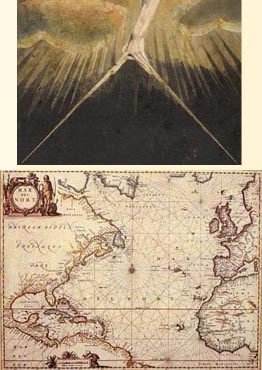
This course covers a range of topics within landscape archaeology that relate to core principles of the field of archaeology: methods of investigation, interpretation and modeling of results; archaeological ethics and cooperative project designs working with local and descendant communities concerned with the heritage of the landscapes under study; and strategies for protecting the cultural resources manifest in those landscapes. The course will also provide students with opportunities to learn fundamental archaeological skills such as surveying, sampling strategies, remote sensing, applications of GIS to archaeology, and the creation of interpretive frameworks for a public audience.
By the conclusion of this course, each student should have acquired skills in the following areas: understanding the theoretical and methodological principles utilized in conducting landscape archaeology studies and the interpretations of data produced in such projects; critical reading and assessment of particular landscape archaeology studies and the basic assumptions, theories, and methods utilized in those studies; an enhanced ability to communicate in written and oral form a research design and interpretive framework for an archaeological site; enhanced skills in locating and utilizing sources for landscape archaeology, including those available through libraries, the internet, research groups, and professional organizations.
The course is organized around reading, class presentations, and critical discussions. Responsibilities for leading discussion of the readings will be rotated among class participants. There will be occasional lectures to offer background on theoretical issues and particular methodological topics. The quality of your course experience will depend in large part on your willingness read thoughtfully and participate actively in class discussions. This course will provide you with the opportunity to hone your skills in articulating significant arguments presented within a particular range of archaeological studies. The course also provides a supportive environment in which to practice your skills at written exposition, classroom debate, and public presentations. This is, for the most part, a reading and discussion course intended for advanced undergraduate and graduate students with backgrounds in anthropology, archaeology, and landscape architecture. Previous course work in archaeology or landscape architecture is assumed, along with familiarity with basic archaeological and anthropological concepts.
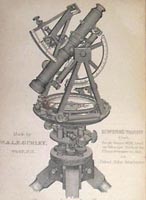
Graduate students, who receive the equivalent of four credits or one graduate unit, will be expected to produce seminar papers of greater length and depth of analysis than undergraduate participants in this course. Graduate students may also arrange to meet with the instructor for additional discussion times each week. For undergraduate students to enroll in this course, they should have already taken an introductory archaeology course, such as Anth. 220, or an introductory landscape architecture course, and an upper-level course in socio-cultural anthropology or archaeology or an equivalent of experiences in prior course work may be accepted as sufficient. Learn more about the course structure and opportunities in the general syllabus guidelines
Locations and Instructor Background
Class will meet Mondays, 3:00pm to 5:50pm in Room 209A of Davenport Hall. Instructor: Chris Fennell, office in 296 Davenport Hall, email cfennell@illinois.edu. Office hours Mondays, 2:00-3:00pm, Wednesdays, 1:00-2:00pm; please email me to arrange a time.
I specialize in historical archaeology as a Professor in Anthropology at the University of Illinois at Urbana-Champaign. My empirical research addresses subjects in trans-Atlantic historical archaeology and the dynamics of social group affiliations and lifeways among Europeans, Africans, and various social groups within the Americas. These research initiatives include interpretative frameworks focusing on social group identities, ethnic group dynamics and racialization, diaspora studies, regional systems and commodity chains, stylistic and symbolic elements of material culture, consumption patterns, and analysis of craft and industrial enterprises. I am an affiliate faculty member of the Department of Landscape Architecture, the Center for African Studies and the Department of African American Studies, offering courses addressing African diaspora subjects and issues of racialization. I am also a member of the College of Law faculty and offer interdisciplinary seminars for graduate and law students.
Required Readings
Texts
Tilley, Christopher (1997). A Phenomenology of Landscape: Places, Paths and Monuments (Oxford: Berg).
Additional suggested readings:
Fennell, Christopher (2011). "Carved, Inscribed, and Resurgent: Cultural and Natural Terrains as Analytic Challenges," introductory chapter in Revealing Landscapes, textbook compiled by C. Fennell, in Perspectives from Historical Archaeology series (Tucson, AZ: Society for Historical Archaeology) (.pdf of chapter and table of contents).
Rapp, George ("Rip"), Jr., and Christopher L. Hill (2d ed. 2006). Geoarchaeology: The Earth Science Approach to Archaeological Interpretation, (New Haven, CT: Yale University Press) (ebook available through UIUC library).
Readings on Electronic Reserve
The other readings listed below under each week's discussion topic, consisting of articles and excerpts from other texts, will be available on electronic reserve in the course web site available through the University's Canvas program.
Enrolled students can access the course web page by logging onto the Canvas system, which will display all existing web pages for your courses. Choose Anth. 453 or LA 454 from the display list and you can access the course syllabus, assignments, lecture notes and illustrations, and other online class resources for Landscape Archaeology.
Additional Resources
I have provided below, following the "Class Schedule" section of the syllabus, a bibliography of additional print sources and a list of internet resources related to the subjects of landscape archaeology. These source lists should be helpful for students in choosing topics for their seminar papers and conducting research related to the course.

Course Assignments and Grading Policy
Your grade in this course will be based on your performance in completing the following assignments:
1. Lead Discussants (10 percent of course grade). Seminar participants will be responsible for leading discussion on the assigned readings for selected class meetings. Such lead discussants should not simply summarize reading assignments one by one, but rather highlight significant theoretical and methodological themes that emerge in the articles, the manner in which they relate to one another and to previous topics discussed in the course, and their implications for archaeological and landscape analysis. For example, one should address questions such as: Do the authors' positions agree? Do you find their arguments persuasive? How do they fit (or fail to fit) with other anthropological and archaeological ideas you find helpful or attractive? A key focus of your presentation should be the manner in which abstract theoretical models can actually be implemented in studying the archaeological record. If particular patterns in the landscape and archaeological record are discussed and explained in an assigned reading, can you think of other ways to account for them? Your presentations should also include a series of questions for discussion by other participants in the class. A sign-up sheet will be distributed for you to choose those weeks in which to be a lead discussant.
2. Class Discussion (10 percent of course grade). Those students who are not a lead discussant in a given week should still come to class prepared to discuss critically the week's readings. I also reserve the right to lower the course grade (by one letter grade) of any student who fails to regularly attend class during the semester.
3. Short Essay (20 percent of course grade). In the eighth week of the course, participants will complete a 5-6 page (double spaced text) introductory essay entitled "What is Landscape Archaeology?" and present a short oral synopsis (5-10 minutes) in class. In writing the essay, you should draw on the assigned reading, class presentations, discussion, and your own insights. This is a first opportunity for you to outline your vision of just how landscape archaeology is a distinctive enterprise in the theoretical, methodological, and empirical realms. The short essay and the oral presentation based on it are due in class at the beginning of Week 8 (Oct. 20). After revision, this short paper can become the introductory section of a longer seminar paper (see below). The grade for the short essay or final seminar paper will be reduced if a student submits the completed assignment late (by one letter grade for each day it is late).
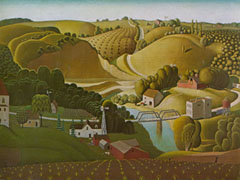
4. Seminar Paper (50 percent of course grade). During the last two to three weeks of the course, participants will complete drafts of their seminar paper, which should be 15-20 pages (double spaced text) in length for undergraduates or 20-25 pages (double spaced text) in length for graduate students. In the seminar paper, you will explore a particular aspect of landscape analysis that interests you. Your paper can have a theoretical (e.g., landscape and the "new ecology"), methodological (e.g., landscape and GIS), or substantive focus (e.g., colonial gardens or symbolic landscapes). This is your opportunity to explore in greater detail a subset of the theoretical and methodological ideas encompassed by landscape analysis. A revised version of your short essay ("What is Landscape Archaeology?") can serve as the conceptual foundation for this effort and as the introductory section of your seminar paper. The focus of the rest of the paper is up to you, but it needs to be cleared in advance with the instructor. An abstract or preliminary statement, with key bibliographic references, is due in class at the beginning of Week 11 (Nov. 10). The final seminar paper is due by 5:00pm on Dec. 18, the last day of the University's exam period.
5. Seminar Paper Presentation and Discussion (10 percent of course grade). During the last two to three weeks of the course, each participant will present in class a 15-minute synopsis of the seminar paper. This will be followed by 10-minute evaluation and comment by a designated discussant. Following a response by the author, the floor will be opened to general discussion. Drafts of the seminar paper will be distributed one week before this presentation to all class members, including the designated discussant.
When preparing these assignments, be careful that you do not plagiarize the works of another; that is, do not present the work or words of another author in a verbatim manner as your own. Consult the UIUC regulations for more information on the hazards of plagiarism, at http://studentcode.illinois.edu/. Assignments handed in late will lose 10% of the possible credit after the class in which they are due, and 10% more for each subsequent day late. No make-ups are provided for missed assignments in the absence of documented and legitimate medical or family emergencies.
Class Schedule
Week 1. Aug. 25. Course Introduction
Overview of course, spectrum of landscape archaeology subjects, and potential research topics.
Readings include the following:
Meinig, D. W. (1979). The Beholding Eye: Ten Versions of the Same Scene, In The Interpretation of Ordinary Landscapes: Geographical Essays, edited by D. W. Meinig and John Brinckerhoff Jackson (New York: Oxford University Press) (on electronic reserve as 'Meinig' in Canvas).
Film: In the Light of Reverence: Protecting America's Sacred Lands (2002), exploring competing perspectives of particular landscapes for use and conservation as sacred sites, recreation, natural resources, and research subjects.
Labor Day holiday! Classes do not meet Sept. 1.
Week 2. Sept. 8. Sites, Non-Sites, and Landscapes.
Readings include the following:
(a) Bender, Barbara (1998). Stonehenge, Making Space (Oxford: Berg).
Introduction: time, place and people, pp. 1-23 (Article 1a and Article 1b in Canvas).
Thinking about landscapes, pp. 25-35 (Article 1b in Canvas).
(b) Dunnell, Robert C. (1992). The Notion Site, in Space, Time, and Archaeological Landscapes, ed. by Jacqueline Rossignol and LuAnn Wandsnider, pp. 21-41 (New York: Plenum Press) (Article 2 in Canvas).
(c) Deetz, James (1990). Landscapes as Cultural Statements, in Earth Patterns: Essays in Landscape Archaeology, ed. by William M. Kelso and Rachel Most, pp. 1-4 (Charlottesville: University Press of Virginia) (Article 3 in Canvas).
(d) Crumley, Carole, and William H. Marquardt (1990). Landscape: A Unifying Concept in Regional Analysis, in Interpreting Space: GIS and Archaeology, ed. by Kathleen Allen, Stanton Green, and Ezra Zubrow, pp. 73-79 (London: Taylor and Francis) (Article 4 in Canvas).
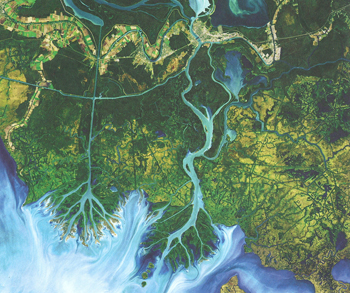
Week 3. Sept. 15. Landscape and Historical Ecology
Readings include the following:
(a) Balle, William (1998). Historical Ecology: Premises and Postulates, in Advances in Historical Ecology, ed. by William Balle, pp. 13-29 (New York: Columbia University Press) (Article 5 in Canvas).
(b) Whitehead, N. (1998). Ecological History and Historical Ecology: Diachronic Modeling vs. Historical Explanation, in Advances in Historical Ecology, ed. by William Balle, pp. 43-66 (New York: Columbia University Press) (Article 6 in Canvas).
(c) Ingerson, Alice E. (1994). Tracking and Testing the Nature-Culture Dichotomy, in Historical Ecology: Cultural Knowledge and Changing Landscapes, ed. by Carole Crumley, pp. 30-41 (Santa Fe, NM: School of American Research) (Article 7 in Canvas).
Week 4. Sept. 22. Landscape, the New Ecology, and Environmental History
Readings include the following:
(a) Zimmerer, Karl S. (1994). Human Geography and the "New Ecology": The Prospect and Promise of Integration. Annals of the Association of American Geographers 84(1):108-125 (Article 8 in Canvas).
(b) Lansing, J. Stephen, and James N. Kremer (1993). Emergent Properties of Balinese Water Temple Networks: Coadaptation on a Rugged Fitness Landscape, American Anthropologist 95:97-114 (Article 9a and Article 9b in Canvas).
(c) Erickson, Clark L. (1999). Neo-environmental Determinism and Agrarian "Collapse," Antiquity 73:634-42 (Article 10 in Canvas).
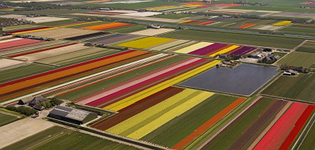
Week 5. Sept. 29. Aesthetics and Experiences of Landscape
Readings include the following:
(a) Johnson, Mathew (2012). Phenomenological Approaches in Landscape Archaeology. Annual Reviews of Anthropology DOI 10.1146/annurev-anthro-092611-145840 (June 29) (Johnson 2012 in Canvas).
(b) Tilley, Christopher (1994). A Phenomenology of Landscape: Places, Paths and Monuments (Oxford: Berg).
Space, Place, Landscape, and Perception: Phenomenological Perspectives, pp. 7-34.
The Social Construction of Landscapes in Small-scale Societies: Structures of Meaning, Structures of Power, pp. 35-69.
An Affinity with the Coast: Places and Monuments in South-west Wales, pp. 76-110.
Suggested additional readings:
Chappell, Sally (2002). Cahokia: Mirror of the Cosmos (Chicago: University of Chicago Press). An illustrated chapter excerpt of this text is available online from the UC Press at http://www.press.uchicago.edu/Misc/Chicago/101363.html.
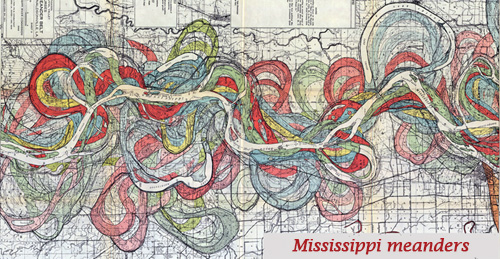
Week 6. Oct. 6. Aesthetics and Experiences of Landscape (cont'd)
Readings include the following:
(a) Tilley, Christopher (1994). A Phenomenology of Landscape: Places, Paths and Monuments (Oxford: Berg).
Escarpments and Spurs: Places and Monuments in the Black Mountains, pp. 111-42.
Ridges, Valleys and Monuments on the Chalk Downland, pp. 143-201.
Conclusion: Ideology and Place: Restructuring the Connections, pp. 202-208.
Week 7. Oct. 13. Geoarchaeology and Site Formation Processes
Readings include the following:
(a) Rapp, George, Jr., and Christopher L. Hill (1998). Geoarchaeology: The Earth Science Approach to Archaeological Interpretation (New Haven, CT: Yale University Press) (this is a suggested reading only; copies of the book are available on reserve at the Undergraduate Library).
Sediments and soils and creation of the archaeological record, pp. 18-49.
Contexts of archaeological record formation, pp. 50-85.
Paleoenvironmental reconstructions: humans, climates and ancient landscapes, pp. 86-111.
Week 8. Oct. 20. Site Formation Processes, Remote Sensing, and GIS Methods
Deadline: Introductory essay due today.
Classroom presentations on subjects of introductory essay.
Readings include the following:
(a) Rapp, George, Jr., and Christopher L. Hill (1998). Geoarchaeology: The Earth Science Approach to Archaeological Interpretation (New Haven, CT: Yale University Press) (this is a suggested reading only; copies of the book are available on reserve at the Undergraduate Library).
Estimating age in the archaeological record, pp. 153-74.
Geologic mapping, remote sensing and surveying, pp. 175-97.
(b) Trumpler, Charlotte (2003). Aerial Photography in Archaeology and Its Pioneers. In The Past From Above: Aerial Photographs of Archaeological Sites, by Georg Gerster, edited by Charlotte Trumpler, pp. 9-23 (Los Angeles: J. Paul Getty Museum) (Article 11 in Canvas).
(c) Hailey, Tommy Ike (2005). The Powered Parachute as an Archaeological Aerial Reconnaissance Vehicle. Archaeological Prospection 12: 69-78 (Article 12 in Canvas).
(d) Kantner, John (1997). Ancient Roads, Modern Mapping: Evaluating Chaco Anasazi Roadways using GIS Technology. Expedition 39(3): 49-62 (Article 13 in Canvas).
Week 9. Oct. 27. Case Studies of Chesapeake Agricultural Landscapes
Readings include the following:
(a) Earle, Carville (1975). The Evolution of a Tidewater Settlement System: All Hallowes Parish, Maryland, 1650-1783. University of Chicago, Department of Geography Research Paper No. 170 (Articles 14a and 14b in Canvas).
Introduction, pp. 1-4.
Settlement systems, area, and agenda, pp. 5-13.
Parameters of the settlement system, pp. 15-37.
(b) Upton, Dell (1985). White and Black Landscapes in Eighteenth-century Virginia. Places 2(2): 59-72 (Article 15 in Canvas).
Week 10. Nov. 3. Gardens and Ornamental Landscapes
Readings include the following:
(a) Leone, Mark P. (1984). Interpreting Ideology in Historical Archaeology: Using the Rules of Perspective in the William Paca Garden in Annapolis, Maryland, in Ideology, Representation and Power in Prehistory, ed. by Christopher Tilley and Daniel Miller, pp. 25-35 (Cambridge: Cambridge University Press) (Article 16 in Canvas).
(b) Pogue, Dennis (1996). Giant in the Earth: George Washington, Landscape Designer, in Landscape Archaeology, ed. by Rebecca Yamin and Karen B. Metheny, pp. 52-69. (Knoxville: University of Tennessee Press) (Article 17a and 17b in Canvas).
(c) Kryder-Reid, Elizabeth (1994). The Archaeology of Vision in Eighteenth-Century Chesapeake Gardens. Journal of Garden History 1: 42-53 (Article 18 in Canvas).
Week 11. Nov. 10. Cultural Landscapes: Heritage, Preservation, and Multivalent Spaces
Deadline: Seminar paper abstract with key bibliographic references due today.
Readings include the following:
(a) Archibald, Robert R. (1999). Facing the Past, in A Place to Remember: Using History to Build Community, pp. 9-25 (Walnut Creek: Alta Mira Press) (Article 19 in Canvas).
(b) Davis, Karen Lee (1997). Sites without Sights: Interpreting Closed Excavations, in Presenting Archaeology to the Public: Digging for Truths, ed. by John Jameson, Jr., pp. 84-98 (Walnut Creek: Alta Mira Press) (Article 20 in Canvas).
(c) Derry, Linda (2000). Southern Town Plans, Story Telling, and Historical Archaeology, in Archaeology of Southern Urban Landscapes, ed. by Amy L. Young, pp. 14-29 (Tuscaloosa: University of Alabama Press) (Article 21 in Canvas).
Week 12. Nov. 17. Cultural Landscapes (cont'd)
Readings include the following:
(a) Lavine, Steven D. (1992). Audience, Ownership, and Authority: Designing Relations between Museums and Communities, in Museums and Communities: The Politics of Public Culture, ed. by Ivan Karp, Christine Mullen Kreamer, and Steven D. Lavine, 137-57 (Washington, D.C.: Smithsonian Institution Press) (Article 22 in Canvas).
(b) Mullins, Paul R. (2004). African-American Heritage in a Multicultural Community: An Archaeology of Race, Culture and Consumption, in Places in Mind: Public Archaeology as Applied Anthropology, ed. by Paul A Shackel and Erve J. Chambers, pp. 57-70 (London: Routledge) (Article 23 in Canvas).
(c) Horning, Audrey (2001). Of Saints and Sinners: Mythic Landscapes of the Old and New South, in Myth, Memory, and the Making of the American Landscape, ed. by Paul A. Shackel, pp. 21-46. (Gainesville: University Press of Florida) (Article 24 in Canvas).
Thanksgiving Break! Classes do not meet Nov. 22-30.
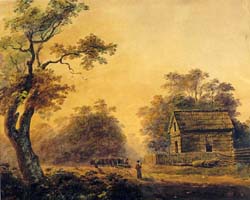
Week 13. Dec. 1. Seminar Paper Presentations and Workshop
Classroom presentations and discussion of seminar papers.
Week 14. Dec. 8. Seminar Paper Presentations and Workshop
Classroom presentations and discussion of seminar papers.
Deadline: Final seminar papers are due by 5:00pm on Dec. 18, the last day of the University's exam period.
Bibliography of Additional Sources related to Landscape Archaeology

Aalen, F. H., K. Whelan, and M. Stout, eds. (1997). Atlas of the Irish Rural Landscape (Toronto: University of Toronto Press).
Aberg, A., and C. Lewis, eds. (2000). The Rising Tide: Archaeology and Coastal Landscapes (Oxford: Oxbow).
Adams, R. McC. (1981). Heartland of Cities: Surveys of Ancient Settlement Systems and Land Use of the Central Floodplains of the Euphrates (Chicago: University of Chicago Press).
Adams, W. H. (1990). Landscape Archaeology, Landscape History, and the American Farmstead. Historical Archaeology 24(4): 92-101, reprinted in Revealing Landscapes. C. C. Fennell, comp., pp. 12-21 (Tucson, AZ: Society for Historical Archaeology, 2011).
Agha, A. (2008). Place, Place-making, and African-American Archaeology: Considerations for Future Work. South Carolina Antiquities 38(1&2): 53-66.
Ainsworth, S., D. Field, and P. Pattison, eds. (1999). Patterns of the Past: Essays in Landscape Archaeology for Christopher Taylor (Oxford: Oxbow Books).
Aitchison, C., N. E. MacLeod, and S. J. Shaw (2000). Leisure and Tourism Landscapes: Social and Cultural Geographies (London: Routledge).
Analen, A. N., and R. Melnick, eds. (2000). Preserving Cultural Landscapes in America (Baltimore: Johns Hopkins University Press).
Anschuetz, Kurt F., Richard H. Wilshusen, and Cherie L. Scheick (2001). An Archaeology of Landscapes: Perspectives and Directions. Journal of Archaeological Research 9(2): 157-211.
Appleton, J. (1980). Landscape in the Arts and Sciences (Hull, UK: University of Hull).
Appleton, J. (1996). The Experience of Landscape (New York: Wiley).
Appleton, J., ed. (1980). The Aesthetics of Landscape: Proceedings of a Symposium held in the University of Hull (Oxford : Rural Planning Services).
Archibald, R. R. (1999). Facing the Past, in A Place to Remember: Using History to Build Community, pp. 9-25 (Walnut Creek: Alta Mira Press).
Ashmore, W., and A. B. Knapp, eds. (1999). Archaeologies of Landscape: Contemporary Perspectives (Malden, MA: Blackwell).
Aston, M. (1983). The Making of the English Landscape: The Next 25 Years. Local Historian 15(6):323-332.
Aston, M. (1985). Interpreting the Landscape: Landscape Archaeology in Local Studies (London: Batsford).
Aston, M. (2002). Interpreting the Landscape from the Air (Stroud: Tempus).
Aston, Michael and Trevor Rowley (1974). Landscape Archaeology: an Introduction to Fieldwork Techniques on Post-Roman Landscapes (Newton Abbot, England: David & Charles).
Auge, M. (1995). Non-Places: Introduction to an Anthropology of Supermodernity (London: Verso).

Aveni, Anthony F., and Helaine Silverman (1991). Between the Lines: Reading the Nazca Markings as Rituals Writ Large. The Sciences July/August.
Baker, Alan R., and Gideon Biger, eds. (1992). Ideology and Landscape in Historic Perspective: Essays on the Meanings of Some Places in the Past (Cambridge, UK: Cambridge University Press).
Baldwin, A. Dwight, Jr., et al., eds. (1993). Beyond Preservation: Restoring and Inventing Landscapes (Minneapolis: University of Minnesota Press).
Balée, W., ed. (1998). Advances in Historical Ecology (New York: Columbia University Press).
Banning, E. B. (2002). Archaeological Survey (New York: Kluwer Academic/Plenum).
Barker, K., and T. Darvill, eds. (1997). Making English Landscapes: Changing Perspectives (Oxford: Oxbow Books).
Barnes, T. J., and J. S. Duncan, eds. (1992). Writing Worlds: Discourse, Text and Metaphor in the Representation of Landscape (London: Routledge).
Basso, Keith (1996). Wisdom Sits in Paces: Notes on a Western Apache Landscape, in Senses of Place, ed. by Steven Feld and Keith H. Basso, pp.53-90 (Santa Fe, NM: School of American Research Press).
Baugher, Sherene (2001). Visible Charity: The Archaeology, Material Culture, and Landscape Design of New York City's Municipal Almshouse Complex, 1736-1797. International Journal of Historical Archaeology 5(2): 175-202.
Beaudry, Mary C. (1986). The Archaeology of Historical Land Use in Massachusetts. Historical Archaeology 20(2):38-46.
Beaudry, Mary C. (1999). The Archaeology of Domestic Life in Early America, in Old and New Worlds, ed. by Geoff Egan and Ronald L. Michael, pp.117-26 (Oxford: Oxbow).
Beglane, Fiona (2015). Anglo-Norman Parks in Medieval Ireland (Four Courts Press).
Bender, Barbara (1992). Theorizing Landscape and the Prehistoric Landscapes of Stonehenge. Man 27: 735-55.
Bender, Barbara (1998). Stonehenge: Making Space (Oxford: Berg).
Bender, Barbara, ed. (1993). Landscape: Politics and Perspectives (London: Berg).
Bender, Barbara, Sue Hamilton and Christopher Tilley (2007). Stone Worlds: Narrative and Reflexivity in Landscape Archaeology (Walnut Creek, CA: Left Coast Press).
Bender, Barbara, and Margot Winer, eds. (2001). Contested Landscapes: Movement, Exile, and Place (Oxford: Berg).
Beresford, M. W. (1948). Ridge and Furrow and the Open Field. Economic History Review 2nd series, 1:34-45.
Beresford, M. W. (1956) The Lost Villages of England (London: Lutterworth).
Beresford, M. W., and J. K. St. Joseph (1978). Medieval England: An Aerial Survey (Cambridge: Cambridge University Press).
Birnbaum, Charles, and Christine C. Peters (1996). The Secretary of the Interior’s Standards for the Treatment of Historic Properties with Guidelines for the Treatment of Cultural Landscapes (Washington DC: U.S. Department of the Interior, National Park Service).
Blaikie, P. M., and H. C. Brookfield, eds. (1987). Land Degradation and Society (London: Methuen).
Blades, B. S. (2003). European Military Sites as Ideological Landscapes. Historical Archaeology 37(3): 46-54, reprinted in Revealing Landscapes. C. C. Fennell, comp., pp. 318-26 (Tucson, AZ: Society for Historical Archaeology, 2011).
Boivin, N., and M. A. Owoc, eds. (2004). Soils, Stones and Symbols: Cultural Perceptions of the Mineral World (London: UCL Ptess).
Bond, J. (2000). Landscapes of Monasticism. In Landscape: The Richest Historical Record. SLS Supplementary Series 1. D. Hooke, ed., pp. 63-72 (Amesbury: Society fot Landscape Studies).
Borchert, James (1986). Alley Landscapes of Washington, in Common Places: Readings in American Vernacular Architecture, ed. by Dell Upton and John M. Vlach, pp. 281-91 (Athens, GA: University of Georgia Press).
Bowden, M. (2001). Mapping the Past: OGS Crawford and the Development of Landscape Studies. Landscapes 2:29-45.
Bowden, M., ed. (1999). Unraveling the Landscape: An Inquisitive Approach to Archaeology (Stroud: Tempus).
Bradley, R. (1998a). The Significance of Monuments: On the Shaping of Human Experience in Neolithic and Bronze Age Europe (London: Routledge).
Bradley, R. (1998b). Rock Art and the Prehistory of Atlantic Europe: Signing the Land (London: Routledge).
Bradley, R. (2000). Mental and Material Landscapes in Prehistoric Britain. In Landscape: The Richest Historical Record. SLS Supplementary Series 1. D. Hooke, ed., pp. 1-11 (Amesbury: Society for Landscape Studies).
Brandon, J. C., and J. M. Davidson (2005). The Landscape of Van Winkle's Mill: Identity, Myth, and Modernity in the Ozark Upland South. Historical Archaeology 39(3): 113-31, reprinted in Revealing Landscapes. C. C. Fennell, comp., pp. 378-96 (Tucson, AZ: Society for Historical Archaeology, 2011).
Brend, Amanda, Nick Card, Jane Downes, Mark Edmonds, and James Moore (eds.) (2020). Landscapes Revealed: Geophysical Survey in the Heart of Neolithic Orkney World Heritage Area 2002–2011 (London: Oxbow Books).
Brown, Marilyn. 2012. Scotland's Lost Gardens: From the Garden of Eden to the Stewart Palaces, Royal Commission on the Ancient & Historical Monuments of Scotland.
Brown, Mike, and Barbara Humberstone, editors (2015). Seascapes: Shaped by the Sea (London: Ashgate Publishing).
Bruno, David, and Julian Thomas, eds. (2008). Handbook of Landscape Archaeology (Walnut Creek, CA: Left Coast Press).
Carson, Cary, Norman F. Barka, William M. Kelson, Garry Wheeler Stone, and Dell Upton (1988). Impermanent Architecture in the Southern American Colonies, in Material Life in America, 1600-1860, edited by Robert Blair St. George, pp. 113-158 (Boston: Northeastern University Press).
Carson, Rachel (1962). Silent Spring (Boston: Houghton Mifflin).
Chandler, J. 2000 The Discovery of Landscape. In Landscape: The Richest Historical Record. SLS Supplementary Series 1. D. Hooke, ed., pp. 133-142 (Amesbury: Society for Landscape Studies).
Chapman, Henry (2006). Landscape Archaeology and GIS (Hertfordshire, UK: Tempus Press).
Chappell, Sally A. (2002). Cahokia: Mirror of the Cosmos (Chicago: University of Chicago Press).
Cherry, J. F., J. L. Davis, and E. Mantzourani, eds. (1991). Landscape Archaeology as Long-Term History: Northern Keos in the Cycladic Islands from Earliest Settlement Until Modern Times. UCLA Institute of Archaeology monograph (Los Angeles: University of California Press).
Clapp, Anne De Coursey (2012). Commemorative Landscape Painting in China (Princeton, NJ: Princeton University Press).
Clark, Bonnie J. (2020). Finding Solace in the Soil: An Archaeology of Gardens and Gardeners at Amache. Boulder: University Press of Colorado.
Clark, Jennifer, and Majella Franzmann (2006). Authority from Grief, Presence and Place in the Making of Roadside Memorials. Death Studies 30: 579–599.
Clark, M., and M. Sleeman (1991). Writing the Earth, Righting the Earth: Committed Presuppositions and the Geographical Imagination. In New Words, New Worlds: Reconceptualising Social and Cultural Geography. C. Philo, ed., pp. 49-60 (Lampeter: St David's University College).
Clement, C. O. (1997). Settlement Patterning on the British Caribbean Island of Tobago. Historical Archaeology 31(2): 93-106, reprinted in Revealing Landscapes. C. C. Fennell, comp., pp. 225-38 (Tucson, AZ: Society for Historical Archaeology, 2011).
Colwell-Chanthaphonh, Chip, T. J. Ferguson, and Roger Anyon (2008). Always Multivocal and Multivalent: Conceptualizing Archaeological Landscapes in Arizona's San Pedro Valley. In Archaeologies of Placemaking: Monuments, Memories, and Engagement in Native North America, edited by Patricia E. Rubertone (Walnut Creek, CA: Left Coast Press).
Contreras, Daniel (ed.) (2016). The Archaeology of Human-Environment Interactions: Strategies for Investigating Anthropogenic Landscapes, Dynamic Environments, and Climate Change in the Human Past (New York: Routledge).
Conyers, Lawrence B. (1997). Introduction, in Ground Penetrating Radar: An Introduction for Archaeologists, pp.11-21 (Walnut Creek: Alta Mira Press).

Conzen, Michael P., ed. (1990). The Making of the American Landscape (Boston: Unwin Hyman).
Coones, P. (1985). One Landscape or Many? A Geographical Perspective. Landscape History 25: 512.
Corbin, A. (1998). Shifting Sand and Muddy Waters: Historic Cartography and River Migration as Factors in Locating Steamboat Wrecks on the Far Upper Missouri River. Historical Archaeology 32(4): 86-94, reprinted in Revealing Landscapes. C. C. Fennell, comp., pp. 79-87 (Tucson, AZ: Society for Historical Archaeology, 2011).
Cosgrove, Denis E. (1984). Social Formation and Symbolic Landscape (Madison, WI: University of Wisconsin Press).
Cosgrove, Denis (1989) Geography is Everywhere: Culture and Symbolism in Human Landscapes, in Horizons in Human Geography, D.Gregory and R. Walford, eds., pp. 118-35. Basingstoke: Macmillan.
Cosgrove, D. (2000). Apollo's Eye: A Carrographie Genealogy of rhe Earth in the Western Imagination (Baltimore: Johns Hopkins).
Cosgrove, Dennis and Stephen Daniels, eds. (1988). The Iconography of Landscape. Cambridge: Cambridge University Press.
Craik, Kenneth H. (1986). Psychological Reflections on Landscape, in Landscape Meanings and Values, E. C. Penning-Rowsell and D. Lowenthal, eds., pp. 48-64. London: Allen and Unwin.
Crawford, O. G. S. (1928). Wessex from the Air (Oxford: Clarendon Press).
Cronon, William (1983). Changes in the Land: Indians, Colonists, and the Ecology of New England (New York: Hill and Wang).
Cronon, William (1991). Nature's Metropolis: Chicago and the Great West (New York: W. W. Norton).
Cronon, William, ed. (1996). Uncommon Ground: Rethinking the Human Place in Nature (New York: Norton).
Cronon, William, George A. Miles, and Jay Gitlin, eds. (1992). Under an Open Sky: Rethinking America's Western Past (New York: W.W. Norton).
Crumley, Carole L. (1994). Historical Ecology: A Multidimensional Ecological Orientation, in Historical Ecology: Cultural Knowledge and Changing Landscapes, ed. by Carole L. Crumley, pp. 1-16 (Santa Fe, NM: School of American Research).
Crumley, Carole L., and William H. Marquardt (1990). Landscape: A Unifying Concept in Regional Analysis, in Interpreting Space: GIS and Archaeology, ed. by Kathleen Allen, Stanton Green, and Ezra Zubrow, pp. 73-79 (London: Taylor and Francis).
Crumley, Carole L., and William H. Marquardt, eds. (1987). Regional Dynamics: Burgundian Landscapes in Historical Perspective (San Diego: Academic Press).
Curry, M. R. (1992). The Architectonic Impulse and the Reconceptualisation of the Concrete in Contemporary Geography. In Writing Worlds: Discourse, Text and Metaphor in the Representation of Landscape. T. J. Barnes and J. S. Duncan, eds., pp. 91-117 (London: Routledge).
Daniels, S. (1992). Fields of Vision: Landscape Imagery and National Identity in England and the United States (Cambridge: Polity).
Daniels, Stephen (1993). Fields of Vision: Landscape Imagery and National Identity in England and the United States (Cambridge: Polity).
Darby, H. C., ed. (1936). An Historical Geography of England Before AD 1800 (Cambridge: Cambridge University Press).
David, B. (2002). Landscapes, Rock Art and the Dreaming: An Archaeology of Pre-Understanding (Leicester: Leicester University Press).
David, B., and M. Wilson, eds. (2002). Inscribed Landscapes: Marking and Making Place (Honolulu: University of Hawaii Press).
Davis, Karen Lee (1997). Sites without Sights: Interpreting Closed Excavations, in Presenting Archaeology to the Public: Digging for Truths, ed. by John Jameson, Jr., pp.84-98 (Walnut Creek: Alta Mira Press).
Day, Christopher (2014). Places of the Soul: Architecture and Environmental Design as Healing Art (Abingdon, Oxon: Routledge).
Dean, Carolyn (2010). Culture of Stone: Inka Perspectives on Rock (Durham, NC: Duke University Press).
de Certeau, Michel (1984). The Practice of Everyday Life (Berkeley, CA: University of California Press).
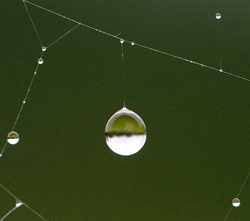
Deetz, J. F. (1990). Landscapes as Cultural Statements, in Earth Patterns: Essays in Landscape Archaeology, ed. by William M. Kelso and Rachel Most, pp. 1-4 (Charlottesville: University Press of Virginia).
Delle, J. A. (1999). "A Good and Easy Speculation": Spatial Conflict, Collusion, and Resistance in Late 16th-Century Munster, Ireland.International Journal of Historical Archaeology 3(1): 11-35.
Delle, J. A. (1999). The Landscapes of Class Negotiation on Coffee Plantations in the Blue Mountains of Jamaica, 1790-1850. Historical Archaeology 33(1): 136-58, reprinted in Revealing Landscapes. C. C. Fennell, comp., pp. 134-56 (Tucson, AZ: Society for Historical Archaeology, 2011).
Denevan, William M. (1992). The Pristine Myth: The Landscapes of the Americas in 1492. Association of American Geographers 82(3):369-385.
Derry, Linda (2000). Southern Town Plans, Story Telling, and Historical Archaeology, in Archaeology of Southern Urban Landscapes, ed. by Amy L. Young, pp. 14-29 (Tuscaloosa: University of Alabama Press).
Devereux, P. (2001). Shamanism and the Mystery Lines: Ley Lines, Spirit Paths, Out-of-Body Travel and Shape-Shifting (London: Quantum).
Dincauze, Dena F. (2000). Environmental Archaeology: Principles and Practice (Cambridge: Cambridge University Press).
Dirlik, Arlif (1998). Globalism and the Politics of Place. Development 41(2): 7-14.
Dohl, Rebecca, and Julian J. van Rensbourg, eds. (2019). Signs of Place: A Visual Interpretation of Landscape. Berlin Series of the Ancient World 69. Berlin: Edition Topoi.
Duncan, J. and N. Duncan (1988). (Re)reading the Landscape. Environment and Planning: Society and Space 6: 117-26.
Duncan, James S., Jr. (1973). Landscape Taste as a Symbol of Group Identity: A Westchester County Village. Geographical Review 63(3): 334-55.
Duncan, James S., Jr. (1976). Landscape and the Communication of Social Identity. In The Mutual Interaction of People and Their Built Environment: A Cross-Cultural Perspective, Amos Rapoport, editor, pp. 391-401 (The Hague: Mouton; distributed by Aldine, Chicago).
Dunnell, Robert C (1992). The Notion Site, in Space, Time, and Archaeological Landscapes, ed. by Jacqueline Rossignol and LuAnn Wandsnider, pp. 21-41 (New York: Plenum Press).
Dunning, Nicholas, et al. (1999). Temple Mountains, Sacred Lakes, and Fertile Fields: Ancient Maya Landscapes in Northwestern Belize. Antiquity 73(281) (Sept. 1999).
Ebert, J. I. (1992). Distributional Archaeology (Albuquerque: University of New Mexico Press).
Erickson, Clark L. (1999). Neo-environmental Determinism and Agrarian "Collapse" in Andean Prehistory. Antiquity 73(281) (Sept. 1999).
Escobar, Arturo (2001). Culture Sits in Places: Reflections on Globalism and Subaltern Strategies of Localization. Political Geography 20: 139-174.
Evans, Christopher (1985). Tradition and the Cultural Landscape: An Archaeology of Place. Archaeological Review from Cambridge 4 (1): 80-94.
Evans, John G. (2003). Environmental Archaeology and the Social Order (London: Routledge).
Everson, Paul, and Tom Williamson, eds. (1998). The Archaeology of Landscape (Manchester: Manchester University Press).
Ewart Evans, G. (1966). The Pattern Under the Plough: Aspects of the Folk-Life of East Anglia (London: Faber).
Fairclough, Graham, et al., eds. 2008. The Heritage Reader (London: Routledge).
Feinman, Gary M. (1999). Defining a Contemporary Landscape Approach: Concluding Thoughts. Antiquity 73(281) (Sept. 1999).
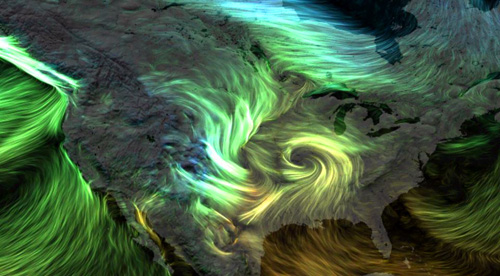
Fennell, C. C. (2010). Damaging Detours: Routes, Racism, and New Philadelphia. Historical Archaeology 44(1): 138-54, reprinted in Revealing Landscapes. C. C. Fennell, comp., pp. 361-77 (Tucson, AZ: Society for Historical Archaeology, 2011).
Fennell, C. C. (2011). Carved, Inscribed, and Resurgent: Cultural and Natural Terrains as Analytic Challenges. In Revealing Landscapes. C. C. Fennell, comp., pp. 1-11 (Tucson, AZ: Society for Historical Archaeology) (.pdf of chapter excerpt).
Fisher, Christopher T., and Tina L. Thurston, eds. (1999). Dynamic Landscapes and Socio-political Process: The Topography of Anthropogenic Environments in Global Perspective. Antiquity 73(281) (Sept. 1999).
Field, J. (1989). English Field Names: A Dictionary (Gloucester: Alan Sutton).
Fish, S. K., and S. A. Kowalewski, eds. (1990). The Archaeology of Regions: A Case for Full-Coverage Survey (Washington: Smithsonian Institution Press).
Fleming, Andrew (1987). Coaxial Field Systems: Some Questions of Time and Space. Antiquity 61:188-202.
Fleming, Andrew and Yannis Hamilakis (1997). Peopling the Landscape. Antiquity 71: 765-67.
Fontijn, David (1996). Socializing Landscape. Second Thoughts about the Cultural Biography of Urnfields. Archaeological Dialogues 3: 77-87.
Foote, Kenneth E. (1997). Shadowed Ground: America's Landscapes of Violence and Tragedy (Austin: University of Texas Press).
Frodeman, R. (2004). Reading the Earth: Philosophy in/of the Field. In Soils, Stones and Symbols: Cultural Perceptions of the Mineral World. N. Boivin and M. A. Owoc, eds., pp. 203-216 (London: UCL Press).
Garrison, J. Ritchie (1991). Landscape and Material Life in Franklin County, Massachusetts, 1770-1860 (Knoxville: University of Tennessee Press).
Gartner, William G. (1999). Late Woodland Landscapes of Wisconsin: Ridged Fields, Effigy Mounds and Territoriality. Antiquity 73(281) (Sept. 1999).
Gelling, M. (1988). Signposts to the Past: Place-Names and the History of England (3rd edition 1997) (London: Phillimore).
Gelling, M., and A. Cole (2000). The Landscape of Place-Names (Stamford: Shaun Tyas).
Gillette, Donna L., et al., editors (2014). Rock Art and Sacred Landscapes (New York: Springer Press).
Gillings, Mark, D. Mattingly, and J. van Dalen, eds. (1999). Geographical Information Systems and Landscape Archaeology. Archaeology of Mediterranean Landscapes 3 (Oxford: Oxbow).
Ginsburg, Rebecca (2007). The Fugitive Slave Landscape. Landscape 26(1): 1-7.
Given, M. (2005). Mining Landscapes and Colonial Rule in Early-Twentieth-Century Cyprus. Historical Archaeology 39(3): 49-60, reprinted in Revealing Landscapes. C. C. Fennell, comp., pp. 306-17 (Tucson, AZ: Society for Historical Archaeology, 2011).
Gleason, Kathryn L. (1994). To Bound and to Cultivate: An Introduction to the Archaeology of Gardens and Fields, in The Archaeology of Garden and Field, ed. by Naomi Miller and Kathryn Gleason, pp. 1-24 (Philadelphia: University of Pennsylvania Press).
Golledge, Reginald G., and Robert J. Stimson (1997). Spatial Behavior (New York: Guilford Press).
González-Tennant, E. (2009). Using Geodatabases to Generate "Living Documents" for Archaeology: A Case Study from the Otago Goldfields, New Zealand. Historical Archaeology 43(3): 20-37, reprinted in Revealing Landscapes. C. C. Fennell, comp., pp. 116-33 (Tucson, AZ: Society for Historical Archaeology, 2011).
Goodwin, C. M., K. B. Metheny, J. M. Kratzer, and A. Yentsch (1995). Recovering the Lost Landscapes of the Stockton Gardens at Morven, Princeton, New Jersey. Historical Archaeology 29(1): 35-61, reprinted in Revealing Landscapes. C. C. Fennell, comp., pp. 22-48 (Tucson, AZ: Society for Historical Archaeology, 2011).
Gorringe, T. (2002). A Theology of the Built Environment: Justice, Empowerment, Redemption (Cambridge: Cambridge University Press).
Gregory, D. (1994). Geographical Imaginations (Oxford: Blackwell).
Grab, Stefan, and Jasper Knight, editors (2015). Landscapes and Landforms of South Africa (New York: Springer Press).
Griswold, Charles L. (1986). The Vietnam Veterans Memorial and the Washington Mall: Philosophical Thoughts on Political Iconography. Critical Inquiry (Summer 1986) 12:688-719.
Groth, Paul, and Todd W. Bressi, eds. (1997). Understanding Ordinary Landscapes (New Haven: Yale University Press).
Grove, A. T., and O. Rackharn (2001). The Nature of Mediterranean Europe: An Ecological History (New Haven: Yale University Press).
Gudis, Catherine (2004). Buyways: Billboards, Automobiles, and the American Landscape (New York: Routledge).
Guelke, L. (1982). Historical Understanding in Geography: An Idealist Approach (Cambridge: Cambridge University Press).
Gundaker, Grey (1993). Tradition and Innovation in African-American Yards. African Art (April 1993) 26(2):58-71, 94-96.
Gundaker, Grey (1994). African-American History, Cosmology, and the Moral Universe of Edward Houston's Yard. Journal of Garden History 14(3): 179-205.
Gupta, Akhil and James Ferguson (1992). Beyond Culture: Space, Identity and the Politics of Difference. Cultural Anthropology 7(1): 6-23.
Handsman, Russell G. (2008). Landscapes of Memory in Wampanoag Country -- and the Monuments upon Them. In Archaeologies of Placemaking: Monuments, Memories, and Engagement in Native North America, edited by Patricia E. Rubertone (Walnut Creek, CA: Left Coast Press).
Hardesty, Donald L., and Barbara J. Little (2000). Assessing Site Significance: A Guide for Archaeologists and Historians (Walnut Creek, CA: AltaMira Press).
Harley, J. B. (1992). Deconstrucring the Map. In Writing Worlds: Discourse, Text and Metaphor in the Representation of Landscape. T. J. Barnes and
J. S. Duncan, eds., pp. 231-247 (London: Routledge).
Harley, J. B. (2000). The New Nature of Maps: Essays in the History of Cartography (Baltimore: Johns Hopkins University Press).
Harmon, D., ed. (1989). Mirror of America: Literary Encounters with National Parks (Boulder: Roberts Rinehart).
Harmon, James M., Mark P. Leone, Stephen D. Prince, and Marcia Snyder (2006). LiDAR for Archaeological Landscape Analysis: A Case Study of Two Eighteenth-Century Maryland Plantation Sites. American Antiquity 71(4): 649-70.
Hayden, Dolores (1997). The Power of Place: Urban Landscapes as Public History (Cambridge, Mass.: MIT).
Hart, John F. (1975). The Look of the Land. Foundations of Cultural Geography Series (Englewood Cliffs, NJ: Prentice-Hall).
Hart, John F. (1998). The Rural Landscape (Baltimore, MD: Johns Hopkins University Press).
Hawkins, Harriet, and Elizabeth Straughan, editors (2015). Geographical Aesthetics: Imagining Space, Staging Encounters (London: Ashgate Publishing).
Hayden, Dolores (1995). The Power of Place: Urban Landscapes as Public History (Cambridge, MA: MIT Press).
Hermans, Rita, Jan Kolen, and Hans Renes, editors (2015). Landscape Biographies: Geographical, Historical and Archaeological Perspectives on the Production and Transmission of Landscapes (Amsterdam University Press).
Herva, V. P., Hakonen, A., Norum, R. Seitsonen, O., and Fjellström, M. (2025). Weirding Landscapes: Arctic Glacier Extinction and Monsters of the Anthropocene. Cham, Switzerland: Springer Nature (Open access link).
Hicks, Dan, Laura McAtackney, and Graham Fairclough, eds. (2007). Envisioning Landscape: Situations and Standpoints in Archaeology and Heritage (Walnut Creek, CA: Left Coast Press).
Hirsch, E., and M. O'Hanlon (eds.) (1995). The Anthropology of Landscape: Perspectives on Place and Space (Oxford: Clarendon Press).
Hodder, Ian, and Clive Orton (1976). Spatial Analysis in Archaeology (Cambridge University Press).
Hooke, D. (1997). Lamberde leie, dillameres die: A Lost or a Living Landscape? In Making English Landscapes: Changing Perspectives. K. Barker and T. Darvill, eds., pp. 26-45 (Oxford: Oxbow Books).
Hooke, D., ed. (2000). Landscape: The Richest Historical Record. SLS Supplementary Series 1 (Ameshury: Society for Landscape Studies).
Horning, Audrey (2001). Of Saints and Sinners: Mythic Landscapes of the Old and New South, in Myth, Memory, and the Making of the American Landscape, ed. by Paul A. Shackel, pp. 21-46 (Gainesville: University Press of Florida).
Hoskins, W. G. (1973). English Landscapes: How to Read the Man-Made Scenery of England (London: British Broadcasring Corporation).
Hoskins, W. G. (1977). The Making of the English Landscape. Reprinted with new introduction (London: Hodder & Stoughron).
Hough, Michael (1990). Out of Place: Restoring Identity to the Regional Landscape (New Haven, CT: Yale University Press).
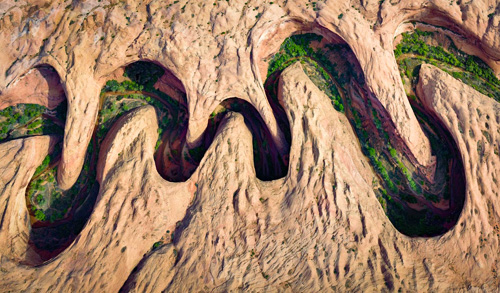
Ingold, Timothy (1993). The Temporality of the Landscape. World Archaeology 25(2):152-174.
Ireland, T. (2003). "The Absence of Ghosts": Landscape and Identity in the Archaeology of Australia's Settler Culture. Historical Archaeology 37(1): 56-72, reprinted in Revealing Landscapes. C. C. Fennell, comp., pp. 327-43 (Tucson, AZ: Society for Historical Archaeology, 2011).
Isaac, Rhys (1982). (Chapel Hill: University of North Carolina Press).
Jackson, J. B. (1979). The Order of a Landscape: Reason and Religion in Newtonian America. In The Interpretation of Ordinary Landscapes: Geographical Essays. D. W. Meinig, ed., pp. 153-163 (Oxford: Oxford University Press).
Jackson, John B. (1980). The Necessity for Ruins, and Other Topics (Amherst: University of Massachusetts Press).
Jackson, John B. (1984). Discovering the Vernacular Landscape (New Haven, CT: Yale University Press).
Jackson, John B. (1994). A Sense of Place, A Sense of Time (New Haven, CT: Yale University Press).
Jackson, John B., and Ervin H. Zube (1970). Landscapes: Selected Writings of J. B. Jackson (Amherst: University of Massachusetts Press).
Jackson, Peter (1989). Maps of Meaning: An Introduction to Cultural Geography (London and Boston: Unwin Hyman).
Jameson, John H., Jr., ed. (1997). Presenting Archaeology to the Public: Digging for Truths (Walnut Creek, CA: AltaMira Press).
Jennings, Jan, ed. (1990). Roadside America: The Automobile in Design and Culture (Ames: Iowa State University Presss).
Johnson, Mathew (2007). Ideas of Landscape (Oxford: Blackwell).
Jones, R., and M. Page (2003). Characterising Rural Settlement and Landscape: Whittlewood Forest in the Middle Ages. Medieval Archaeology 47:53-84.
Kantner, John (1997). Ancient Roads, Modern Mapping: Evaluating Chaco Anasazi Roadways using GIS Technology. Expedition 39(3): 49-62.
Kantner, John (2008). The Archaeology of Regions: From Discrete Analytical Toolkit to Ubiquitous Spatial Perspective. Journal of Archaeological Research 16: 37-81.
Kaye, Anthony E. (2007). Joining Places: Slave Neighborhoods in the Old South (Chapel Hill: University of North Carolina Press).
Kelly, Jason M., and Fiona P. Macdonald, editors. 2017. An Anthropocene Primer. Indianapolis: IUPUI Arts and Humanities Institute (Open access link).
Kelso, William M. and Rachel Most, eds. (1990). Earth Patterns: Essays in Landscape Archaeology (Charlottesville: University Press of Virginia).
Kerber, Jordan E. (1994). Cultural Resource Management (Westport, CT: Bergin & Garvey).
Killion, Thomas W. (1992). Residential Ethnoarchaeology and Ancient Site Structure, in Gardens of Prehistory: The Archaeology of Settlement Agriculture in Greater Mesoamerica, ed. by Thomas W. Killion, pp. 119-149 (Tuscaloosa: University of Alabama Press).
King, Thomas (1998). Cultural Resources Laws and Practices (Lanham, MD: Rowman & Littlefield).
King, Thomas (2003). Places that Count: Traditional Cultural Properties (Lanham, MD: Rowman & Littlefield).
Kirch, P. V., and T. L. Hunt, eds. (1997). Historical Ecology in the Pacific Islands: Prehistoric Environmental and Landscape Change (New Haven, CT: Yale University Press).
Kluiving, S. J., and E.B. Guttmann-Bond (eds.) (2012). Landscape Archaeology between Art and Science: From a Multi- to an Interdisciplinary Approach (New York: Springer).
Kolen, Jan, Hans Renes, and Rita Hermans, eds. (2015). Landscape Biographies: Geographical, Historical, and Archaeological Perspectives on the Production and Transmission of Landscapes (Amsterdam: Amsterdam University Press).
Kolen, Jan, and Rob van der Laarse, editors (2014). Reader in Landscape and Heritage (Amsterdam University Press).
Kosiba, Steve, and Andrew M. Bauer (2012). Mapping the Political Landscape: Toward a GIS Analysis of Environmental and Social Difference. Journal of Archaeological Method and Theory, DOI 10.1007/s10816-011-9126-z.
Knowles, Anne K. (2002). Past Time, Past Place: GIS for History (Redlands, CA: ESRI Press).
Kolodny, Annette (1984). The Land Before Her: Fantasy and Experience of the American Frontiers, 1630-1860 (Chapel Hill: University of North Carolina Press).
Korr, Jeremy (1997). A Proposed Model for Cultural Landscape Study. Material Culture Fall (1997).
Kristan-Graham, Cynthia (2001). A Sense of Place at Chichen Itza, in Landscape and Power in Ancient Mesoamerica, ed. by Rex Koontz, Kathryn Reese-Taylor, and Annabeth Headrick, pp. 317-69 (Boulder, CO: Westview Press).
Kryder-Reid, Elizabeth and Sarah May, eds. (2023). Toxic Heritage: Legacies, Futures, and Environmental Injustice (London: Routledge) (Open access link).
Lane, Belden C. (1988). Landscapes of the Sacred: Geography and Narrative in American Spirituality. Isaac Hecker Studies in Religion and American Culture (New York: Paulist Press).
Lanier, Gabrielle M., and Bernard L. Herman (1997). Everyday Architecture of the Mid-Atlantic: Looking at Buildings and Landscapes (Baltimore: Johns Hopkins University Press).
Larsen, E. L. (2003). Integrating Segregated Urban Landscapes of the Late-Nineteenth and Early-Twentieth Centuries. Historical Archaeology 37(3): 111-23, reprinted in Revealing Landscapes. C. C. Fennell, comp., pp. 397-409 (Tucson, AZ: Society for Historical Archaeology, 2011).
Lavine, Steven D. (1992). Audience, Ownership, and Authority: Designing Relations between Museums and Communities, in Museums and Communities: The Politics of Public Culture, ed. by Ivan Karp, Christine M. Kreamer, and Steven D. Lavine, 137-57 (Washington, D.C.: Smithsonian Institution Press).
Lawrence, Denise S., and Setha M. Low (1990). The Built Environment and Spatial Form. Annual Review of Anthropology 19:453-505.
Lee, Antoinette J., ed. (1992). Past Meets Future: Saving America's Historic Environments (Washington, D.C.: Wiley).
Lefebvre, Henri (1991). The Production of Space, Donald Nicholson-Smith, trans. (Oxford: Blackwell).
Leighly, John, ed. (1963). Land and Life: A Selection from the Writings of Carl Ortwin Sauer (Berkeley: University of Calififornia Press).
Lekson, S. H. (1999). The Chaco Meridian (Walnut Creek: Altamira).
Leone, Mark P. (1984). Interpreting Ideology in Historical Archaeology: Using the Rules of Perspective in the William Paca Garden in Annapolis, Maryland, in Ideology, Representation and Power in Prehistory, ed. by Christopher Tilley and Daniel Miller, pp. 25-35 (Cambridge: Cambridge University Press).
Leone, Mark P. (1987). Rule by Ostentation: The Relationship Between Space and Sight in Eighteenth Century Landscape Architecture in the Chesapeake Region of Maryland, in Method and Theory for Activity Area Research: An Ethnoarchaeological Approach, ed. by Susan Kent, pp. 604-33 (New York: Columbia University Press).
Leone, Mark P. (1988). The Relationship Between Archaeological Data and the Documentary Record: Eighteenth-Century Gardens in Annapolis, Maryland. Historical Archaeology 22(1): 29-35.
Leone, Mark P. (1989). Issues in Historic Landscapes and Gardens. Historical Archaeology 23(1): 45-47.
Leone, M. P., J. M. Harmon, and J. Neuwirth (2005). Perspective and Surveillance in Eighteenth-Century Maryland Gardens, Including William Paca's Garden on Wye Island. Historical Archaeology 39(4): 138-58, reprinted in Revealing Landscapes. C. C. Fennell, comp., pp. 239-59 (Tucson, AZ: Society for Historical Archaeology, 2011).
Leone, M. P., and S. D. Hurry (1998). Seeing: The Power of Town Planning in the Chesapeake. Historical Archaeology 32(4): 34-62, reprinted in Revealing Landscapes. C. C. Fennell, comp., pp. 277-305 (Tucson, AZ: Society for Historical Archaeology, 2011).
Leveau, Philippe, F. Trement, K. Walsh, and G. Barker, eds. (1999). Environmental Reconstruction in Mediterranean Landscape Archaeology. Archaeology of Mediterranean Landscapes 2 (Oxford: Oxbow).
Lewis, K. E. (1999). The Metropolis and the Backcountry: The Making of a Colonial Landscape on the South Carolina Frontier. Historical Archaeology 33(3): 3-13, reprinted in Revealing Landscapes. C. C. Fennell, comp., pp. 193-203 (Tucson, AZ: Society for Historical Archaeology, 2011).
Lewis, Peirce (1976). New Orleans: The Making of an Urban Landscape (Cambridge, MA: Ballinger Publishing Co).
Lewis, Peirce F. (1982). Axioms for Reading the Landscape, in Material Culture Studies in America, edited by Thomas J. Schlereth (Nashville, TN: American Association for State and Local History).
Lewis, R. Barry, Charles Stout, and Cameron Wesson (1998). The Design of Mississippian Towns, in Mississippian Towns and Sacred Spaces: Searching for An Architectural Grammar, ed. by R. Barry Lewis and Charles Stout, pp. 1-21 (Tuscaloosa: University of Alabama Press).
Linenthal, Edward T. (1991). Sacred Ground: Americans and Their Battlefields (Urbana: University of Illinois Press).
Lippard, L. R. (1997). The Lure of the Local: Senses of Place in a Multicentered Society (New York: New Press).
Llobera, Marcos (1996). Exploring the Topography of Mind: GIS, Social Space, and Archaeology. Antiquity 70:612-22.
Lock, Gary, and Z. Stancic, eds. (1995). Archaeology and Geographic Information Systems: A European Perspective (London: Taylor & Francis).
Low, Setha M., and Denise Lawrence-Zuniga, eds. (2003). The Anthropology of Space and Place: Locating Culture (London: Blackwell).
Lowenthal, David (1975). Past Time, Present Place: Landscape and Memory. Geographical Review 65(1): 1-37.
Lowenthal, D. W., and H. C. Prince (1965). English Landscape Tastes. Geographical Review 55:192.
Lozny, Ludomir R., editor (2015). Continuity and Change in Cultural Adaptation to Mountain Environments: From Prehistory to Contemporary Threats (New York: Springer).
Lucas, Michael T. (2004). Applied Archaeology and the Construction of Place at Mount Calvert, Prince George’s County, Maryland, in Places in Mind: Public Archaeology as Applied Anthropology, ed. by Paul A Shackel and Erve J. Chambers, pp. 119-34 (London: Routledge).
Lynch, Kevin (1972). What Time Is This Place? Cambridge, Mass. and London: MIT Press.
Madry, Scott, and Carole L. Crumley (1990). An Application of Remote Sensing and GIS in a Regional Archaeological Settlement Pattern Analysis: The Arroux River Valley, Burgundy, France, in Interpreting Space: GIS and Archaeology, ed. by Kathleen Allen, Stanton Green, and Ezra Zubrow, pp. 364-80 (London: Taylor & Francis).
Magan, Manchu (2017). Collops and Fíbíns: The Lost Language of Ireland’s Landscape. Irish Times, July 29 (link).
Maschner, H. D. G., ed. (1996). New Methods, Old Problems: Geographic Information Systems in Modern Archaeological Research (Carbondale: Southern Illinois University Center for Archaeological Investigations).
Matless, D. (1993). One Man's England: W. G. Hoskins and the English Culture of Landscape. Rural History 4:187-207.
Matless, D. (1998). Landscape and Englishness (London: Reaktion).
Mawer, A., and F. M. Stemon (1929). Introduction to the Survey of English Place-Names (Camhridge: Cambridge University Press).
McCoy, Mark D. (2020). Maps for Time Travelers: How Archaeologists Use Technology to Bring Us Closer to the Past (Berkeley: University of California Press).
McDowell, L., ed. (1997). Undoing Place? A Geographical Reader (London: Arnold).
McGlade, J. (1995). Archaeology and the Ecodynamics of Human-modified Landscapes. Antiquity 69: 113-32.
McHenry, Stewart G. (1986). Eighteenth-Century Field Patterns as Vernacular Art, in Common Places: Readings in American Vernacular Architecture, ed. by Dell Upton and John M. Vlach, pp. 107-23 (Athens: University of Georgia Press).
McManamon, Francis P., and Alf Hatton, eds. (2000). Cultural Resource Management in Contemporary Society: Perspectives on Managing and Presenting the Past (London: Routledge).
McMurry, Sally (1989). Women in the Vernacular Landscape. Material Culture 20(1): 33-49.
Mendieta, Ramiro Matos, and Jose Barreiro, editors (2015). The Great Inka Road: Engineering an Empire (Washington, DC: Smithsonian Institute Press).
Meinig, D. W. (1979). The Beholding Eye: Ten Versions of the Same Scene, In The Interpretation of Ordinary Landscapes: Geographical Essays, edited by D. W. Meinig, pp. 33-48 (New York: Oxford University Press).
Meinig, D. W., ed. (1979). The Interpretation of Ordinary Landscapes: Geographical Essays (New York: Oxford University Press).
Meinig, D. W., and John Brinckerhoff Jackson, eds. (1979). The Interpretation of Ordinary Landscapes: Geographical Essays (New York: Oxford University Press).
Miller, Angela L. (1993). The Empire of the Eye: Landscape Representation and American Cultural Politics, 1825-1875 (Ithaca, NY: Cornell University Press).
Miller, A. L. (1997). Space, Cultural Authority, and the Imagery of Feminine Influence. In The Material Culture of Gender: The Gender of Material Culture. K. Martinez and K. L. Ames, eds., pp. 311-336 (Wilmington, Delaware: Wintherthur).
Miller, H. M. (1988). Baroque Cities in the Wilderness: Archaeology and Urban Development in Colonial Chesapeake. Historical Archaeology 22(2): 57-73, reprinted in Revealing Landscapes. C. C. Fennell, comp., pp. 260-76 (Tucson, AZ: Society for Historical Archaeology, 2011).
Miller, Naomi Frances, and Kathryn L. Gleason, eds. (1994). The Archaeology of Garden and Field (Philadelphia: University of Pennsylvania Press).
Millward, R. (1992). William George Hoskins, Landscape Historian (1908-1992). Landscape History 14:65-70.
Mingay, G. E., ed. (1989). The Rural Idyll (London: Routledge).
Mitchell, W. J., ed. (1994). Landscape and Power (Chicago: University of Chicago Press).
Morley, D. (2000). Home Territories: Media, Mobility and Identity (London: Routledge).
Morris, R. (1989). Churches in the Landscape (London: Dent).
Muir, R. (1998). Approaches to Landscape (London: Macmillan).
Muir, R. (2000). The New Reading the Landscape: Fieldwork in Landscape History (Exeter: University of Exeter Press).
Mullins, Paul R. (2004). African-American Heritage in a Multicultural Community: An Archaeology of Race, Culture and Consumption, in Places in Mind: Public Archaeology as Applied Anthropology, ed. by Paul A Shackel and Erve J. Chambers, pp. 57-70 (London: Routledge).
Nash, George (2011). Replicating Cultural Landscapes: Interpreting Rock-Art in the Valcamonica, Lombardy, Italy. Landscapes 12(2): 1-19.
Nash, George, and George Children (2000). Walking with Landscape Syntax and Narrative: The Experiential of the Buena Vista Rock Art Site, French Glen, Oregon, in Signifying Place and Space: World Perspectives of Rock Art and Landscape, ed. by George Nash, pp.163-71 (BAR International Series 902; Oxford: Archaeopress).
National Park Service (1994). Management of Cultural Landscapes (Chapter 7), in Cultural Resource Management Guidelines, pp. 93-117 (Washington, D.C.: National Park Service).
National Park Service (1996). Guidelines for the Treatment of Cultural Landscapes. (Washington, D.C.: National Park Service).
Neumann, Thomas W., and Robert M. Stanford (2001). Cultural Resource Archaeology (Lanham, MD: Rowman & Littlefield).
Nichols, Elizabeth, and Rachel Tyson, editors (2015). Stonehenge, Avebury and Associated Sites World Heritage Site (London: Historic England).
Noble, Allen G., ed. (1992). To Build in a New Land: Ethnic Landscapes in North America. Creating the North American Landscape (Baltimore: Johns Hopkins University Press).
Noble, Allen G., and M. Margaret Geib (1984). Wood, Brick, and Stone: The North American Settlement Landscape (Amherst: University of Massachusetts Press).
O'Brien, C., and H. Wheeler (1978). Discovery Learning in Landscape Archaeology. Adult Education 51:352-357.
Orser, C. E., Jr. (2006). Symbolic Violence and Landscape Pedagogy: An Illustration from the Irish Countryside. Historical Archaeology 40(2): 28-44, reprinted in Revealing Landscapes. C. C. Fennell, comp., pp. 344-60 (Tucson, AZ: Society for Historical Archaeology, 2011).
Pauketat, Timothy (2004). Ancient Cahokia and the Mississippians (Cambridge: Cambridge University Press).
Pauketat, Timothy, and Thomas Emerson, eds. (1997). Cahokia: Domination and Ideology in the Mississippian World (Lincoln: University of Nebraska Press).
Penning-Rowsell, E.C. and David Lowenthal, eds. (1986). Landscape Meanings and Values. London: Allen and Unwin.
Philo, c., ed. (1991). New Words, New Worlds: Reconceptualising Social and Cultural Geography (Lampeter: St. David's University College).
Plumwood, V. (1993). Feminism and the Mastery of Nature (London: Routledge).
Pollard, J., and A. Reynolds (2002). Avebury: The Biography of a Landscape (Stroud: Tempus).
Poneous, J. D. (1990). Landscapes of the Mind: Worlds of Sense and Metaphor (Toronto: University of Toronto Press).
Prown, Jules D. (1992). Discovered Lands, Invented Pasts: Transforming Visions of the American West (New Haven, CT: Yale University Press and Yale University Art Gallery).
Purser, M., and N. Shaver (2008). Plats and Place: The Transformation of 19th Century Speculation Townsites on the Sacramento River. Historical Archaeology 42(1): 26-46, reprinted in Revealing Landscapes. C. C. Fennell, comp., pp. 204-24 (Tucson, AZ: Society for Historical Archaeology, 2011).
Rackham, O. (1990). Trees and Woodland in the British Landscape (London: Dent).
Rapoport, Amos (1990). The Meaning of the Built Environment: A Nonverbal Communication Approach (Tucson: University of Arizona Press).
Ray, Celeste, and Manuel Fernández-Götz (eds.) (2020). Historical Ecologies, Heterarchies and Transtemporal Landscapes (New York: Routledge).
Relph, E. (1976). Place and Placelessness (London: Pion).
Reps, John W. (1980). Town Planning in Frontier America (Columbia, MO: University of Missouri Press).
Reynolds, A. (1999). Anglo-Saxon Law in the Landscape: An Archaeological Study of the Old English Judicial System (London: University of London).
Richmond, Jennifer R., and Marion P. Forsyth (2003). Legal Perspectives on Cultural Resources (Lanham, MD: Rowman & Littlefield).
Riley, H., and R. Wilson-North (1999). From Pillow Mounds to Parterres: A Revelation at Cerne Abbas. In Patterns of the Past: Essays in Landscape Archaeology for Christopher Taylor. S. Ainsworth, D. Field, and P. Pattison, eds., pp. 71-76 (Oxford: Oxbow Books).
Riley, D. N. (1987). How Sites Show, in Aerial Photography in Archaeology, pp. 17-40 (Philadelphia: University of Pennsylvania Press).
Rockman, Marcy, and James Steele (eds.) (2003). The Colonization of Unfamiliar Landscapes: The Archaeology of Adaptation (New York: Routledge).
Rodaway, Paul (1994). Sensuous Geographies: Body, Sense, and Place (London: Routledge).
Rodman, Margaret (1992). Empowering Place: Multilocality and Multivocality. American Anthropologist 94: 640-56.
Rodning, Christopher B. (2015). Center Places and Cherokee Towns: Archaeological Perspectives on Native American Architecture and Landscape in the Southern Appalachians (Tuscaloosa: University of Alabama Press).
Rose, G. (1993). Feminism and Geography: The Limits of Geographical Knowledge (Cambridge: Cambridge University Press).
Rossignol, Jaqueline, and LuAnn Wandsnider, eds. (1992). Space, Time and Archaeological Landscapes (New York: Kluwer Academic/Plenum).
Rotherham, Ian D. (2015). Cultural Severance and the Environment: The Ending of Traditional and Customary Practice on Commons and Landscapes Managed in Common (New York: Springer).
Rotman, D. L., and M. S. Nassaney (1997). Class, Gender, and the Built Environment: Deriving Social Relations from Cultural Landscapes in Southwest Michigan. Historical Archaeology 31(2): 42-62, reprinted in Revealing Landscapes. C. C. Fennell, comp., pp. 157-77 (Tucson, AZ: Society for Historical Archaeology, 2011).
Roymans, Nico (1995). The Cultural Biography of Urnfields and the Long-term History of a Mythical Landscape (with comments and reply). Archaeological Dialogues 2: 2-38.
Rubertone, Patricia E. (2008). Memorializing the Narragansett: Place-Making and Memory-Keeping in the Aftermath of Detribalization. In Archaeologies of Placemaking: Monuments, Memories, and Engagement in Native North America, edited by Patricia E. Rubertone (Walnut Creek, CA: Left Coast Press).
Rubertone, Patricia E. (ed.) (2008). Archaeologies of Placemaking: Monuments, Memories, and Engagement in Native North America (Walnut Creek, CA: Left Coast Press).
Ryden, Kent C. (1993). Mapping the Invisible Landscape: Folklore, Writing, and the Sense of Place (Iowa City: University of Iowa Press).
Sanz, Ines Domingo, and Danae Fiore (eds.) (2008). Archaeologies of Art: Time, Place, and Identity (Walnut Creek, CA: Left Coast Press).
Sauer, Carl O. (1952). Agricultural Origins and Dispersals, Bowman Memorial Lectures, Series 2 (New York: American Geographical Society).
Sauer, Carl O. (1956). Time and Place in Ancient America. Landscape 6(2): 8-13.
Sauer, C. O. (1963). Land and Life: A Selection from the Writings of Carl Ortwin Sauer (Berkeley: University of California Press).
Sauer, Carl O. (1968). The Morphology of Landscape. University of California Publications in Geography ; v. 2, no. 2 (New York: Johnson Reprint Corp.).
Sauer, Carl O., and John Barger Leighly (1963). Land and Life: A Selection from the Writings of Carl Ortwin Sauer (Berkeley: University of California Press).
Savoy, Lauret Edith (2015). Trace: Memory, History, Race, and the American Landscape. Berkeley, CA: Counterpoint.
Schama, Simon (1995). Landscape and Memory (New York: Random House).
Schein, Richard H., ed. (2006). Landscape and Race in the United States (New York: Routledge).
Schiffer, Michael B. (1987). Formation Processes of the Archaeological Record (Salt Lake City: University of Utah Press).
Schlereth, Thomas J. (1997). Reading the Road: U.S. 40 and the American Landscape. Revised ed. (Knoxville: University of Tennessee Press).
Schoenwetter, J., and J. W. Hohmann (1997). Landuse Reconstruction at the Founding Settlement of Las Vegas, Nevada. Historical Archaeology 31(4): 41-58, reprinted in Revealing Landscapes. C. C. Fennell, comp., pp. 49-66 (Tucson, AZ: Society for Historical Archaeology, 2011).
Semple, Sarah, and Stuart Brookes (2020). Necrogeography and Necroscapes: Living with the Dead. World Archaeology 52(1): 1–15.
Shackel, P. A. (2004). Labors Heritage: Remembering the American Industrial Landscape. Historical Archaeology 38(4): 44-58, reprinted in Revealing Landscapes. C. C. Fennell, comp., pp. 178-92 (Tucson, AZ: Society for Historical Archaeology, 2011).
Shackel, P. A., ed. (2001). Myth, Memory, and the Making of the American Landscape (Gainesville: University Press of Florida).
Shackel, P. A., and E. J. Chambers, eds. (2004). Places in Mind: Public Archaeology as Applied Anthropology (London: Routledge).
Shepheard, P. (1997). The Cultivated Wilderness: Or, What Is Landscape? (Cambridge: MIT Press).
Silkenat, David (2022). Scars on the Land: An Environmental History of Slavery in the American South (New York: Oxford University Press).
Silko, Leslie M. (1986). Landscape, History, and the Pueblo Imagination. Antaeus 57 (Autumn): 882-94.
Silva, Fabio, and Nicholas Campion, editors (2015). Skyscapes: The Role and Importance of the Sky in Archaeology (London: Oxbow Books).
Silverman, Helaine, and David M. Browne (1991). New Evidence for the Date of the Nazca Lines. Antiquity 65(247): 208-20.
Silverman, Helaine, and William H. Isbell, eds. (2002). Andean Archaeology II: Art, Landscape, and Society (New York: Kluwer Academic/Plenum).
Silverman, Helaine, and David B. Small, eds. (2002). The Space and Place of Death, Archaeological Papers of the American Anthropological Association, Number 11.
Smith, A. (2003). Landscape Representation: Place and Identity in 19th-Century Ordnance Survey Maps of Ireland. In Landscape, Memory and History: Anthropological Perspectives. P. J. Stewart and A. Strathem, eds., pp. 71-88 (London: Pluto).
Smith, A. (2007). Mapped Landscapes: The Politics of Metaphor, Knowledge, and Representation on Nineteenth-Century Irish Ordnance Survey Maps. Historical Archaeology 44(1): 81-91, reprinted in Revealing Landscapes. C. C. Fennell, comp., pp. 88-98 (Tucson, AZ: Society for Historical Archaeology, 2011).
Smith, Carol A., ed. (1976). Regional Analysis I, Economic Systems (New York: Academic Press).
Smith, S. D., C. O. Clement, and S. R. Wise (2003). GPS, GIS and the Civil War Battlefield Landscape: A South Carolina Low Country Example. Historical Archaeology 37(3): 14-30, reprinted in Revealing Landscapes. C. C. Fennell, comp., pp. 99-115 (Tucson, AZ: Society for Historical Archaeology, 2011).
Snead, J. E. (2002). Ancestral Pueblo Trails and the Cultural Landscape of the Pajarito Plateau, New Mexico. Antiquity 76:756-765.
Sofaer, Anna (1997). The Primary Architecture of the Chacoan Culture: A Cosmological Expression, in Anasazi Architecture and American Design, ed. by Baker H. Morrow and V. B. Price, pp. 88-132 (Albuquerque: University of New Mexico Press).
Sofaer, Anna, Michael Marshall, and Rolf Sinclair (1989). The Great North Road: A Cosmographic Expression of the Chaco Culture of New Mexico, in World Archaeoastronomy, ed. by Anthony Aveni, pp. 365-76 (Cambridge: Cambridge University Press).
Soffer, Olga, A. Vasil'ev, and J. Kozlowski, eds. (2003). Perceived Landscapes and Built Environments: The Cultural Geography of Late Paleolithic Eurasia (Oxford: B.A.R., International Series).
Soutar, Sharon, and David Field (2015). The Stonehenge Landscape: Analysing the Stonehenge World Heritage Site (London: Historic England).
Soja, Edward W. (1989). Postmodern Geographies: The Reassertion of Space in Critical Social Theory (London and New York: Verso).
Soja, Edward W. (1996). Thirdspace : Journeys to Los Angeles and Other Real-and-Imagined Places (Cambridge, MA: Blackwell).
Spooner, Sarah (2015). Regions and Designed Landscapes in Georgian England (London: Routledge).
Stafford, C. R. (1995). Geoarchaeological Perspectives on Paleolandscapes and Regional Subsurface Archaeology. Journal of Archaeological Method and Theory 2: 69-104.
Stapp, Darby C., and Michael S. Burney (2002). Tribal Cultural Resource Management (Walnut Creek, CA: AltaMira Press).
Stein, Julie K. (1992). Organic Matter in Archaeological Contexts, in Soils in Archaeology: Landscape Evolution and Human Occupation, ed. by Vance T. Holliday, pp. 193-216 (Washington, D.C.: Smithsonian Institution Press).
Stewart, Pamela J., and Andrew Strathern, eds. (2003). Landscape, Memory and History: Anthropological Perspectives (London: Pluto Press).
Stilgoe, John R. (1982). Common Landscape of America, 1580 to 1845. New Haven, CT: Yale University Press.
Stine, Linda F., Martha Zierden, Lesley M. Drucker, and Christopher Judge, eds. (1997). Carolina Historical Landscapes: Archaeological Perspectives (Knoxville: University of Tennessee Press).
Stoddart, S., ed. (2000). Landscapes from Antiquity (Cambridge: Antiquity Publications).
Stokes, Samuel N., and A. Elizabeth (1989). Saving America's Countryside: A Guide to Rural Conservation (Baltimore: Johns Hopkins University Press).
Stone, Peter. 2008. Stonehenge -- A Final Solution? in The Heritage Reader, ed. by Graham Fairclough et al., pp. 524-35 (London: Routledge).
Stopford, J., ed. (1999). Pilgrimage Explored (Woodbridge: Boydell).
Sullivan, Alan P. (1998). Surface Archaeology (Albuquerque: University of New Mexico Press).
Taylor, J. (1994). A Dream of England: Landscape, Photography and the Tourist's Imagination (Manchester: Manchester University Press).
Theodratus, Dorothea J., and Frank LaPena (1994). Wintu Sacred Geography of Northern California, in Sacred Sites, Sacred Places, ed. by David L. Carmichael et al., pp. 20-31 (London: Routledge).
Thirsk, J., ed. (2000). The English Rural Landscape (Oxford: Oxford University Press).
Thomas, Julian (1996). Time, Culture and Identity (London: Routledge).
Thompson, Jason R. (2015). Anthropological Research Framing for Archaeological Geophysics: Material Signatures of Past Human Behavior (Lexington Books).
Thompson, Robert Farris (1998). Bighearted Power: Kongo Presence in the Landscape and Art of Black America, in Keep Your Head to the Sky: Interpreting African American Home Ground, Grey Gundaker, ed., pp. 37-64 (Charlottesville: University Press of Virginia).
Thurston, Tina (1999). The Knowable, the Doable and the Undiscussed: Tradition, Submission and the "Becoming" of Rural Landscapes in Denmark's Iron Age. Antiquity 73(281) (Sept. 1999).
Tilley, Christopher (1994). A Phenomenology of Landscape: Places, Paths and Monuments (Oxford: Berg).
Tolia-Kelly, D. P. (2004). Landscape, Race and Memory: Biographical Mapping of the Routes of British Asian Landscape Values. Landscape Research 29:277-292.
Trombold, C. D., ed. (1991). Ancient Road Networks and Settlement Hierarchies in the New World (Cambridge: Cambridge University Press).
Tuan, Yi-Fu (1964). Mountains, Ruins and the Sentiment of Melancholy. Landscape 1964 (Autumn): 27-30.
Tuan, Yi-Fu (1974). Topophilia. A Study of Environmental Perception, Attitudes, and Values (Englewood Cliffs: Prentice-Hall).
Tuan, Yi-Fu (1977). Space and Place: The Perspective of Experience (Minneapolis: University of Minnesota Press).
Tuan, Yi-Fu (1979a). Thought and Landscape. The Eye and the Mind's Eye, in The Interpretation of Ordinary Landscapes: Geographical Essays, D.W.Meinig, ed., pp. 89-102 (Oxford: Oxford University Press).
Tuan, Yi-Fu (1979b). Landscapes of Fear (Minneapolis: University of Minneapolis Press).
Turner, J. (1979). The Politics of Landscape: Rural Scenery and Society in English Poetry 1630-1660 (Oxford: Blackwell).
Ucko, Peter, J., and Robert Layton, eds. (1999). The Archaeology and Anthropology of Landscape: Shaping Your Landscape (London: Routledge).
Upton, Dell (1988). New Views of the Virginia Landscape. The Virginia Magazine of History and Biography 96(4): 403-70.
Upton, Dell (1988). White and Black Landscapes in Eighteenth Century Virginia, in Material Life in America, 1600-1860, edited by Robert Blair St. George (Boston: Northeastern University Press).
Upton, Dell (1991). Architectural History or Landscape History? Journal of Architectural Education August (1991): 195-99.
Upton, Dell (1992). The City as Material Culture, in The Art and Mystery of Historical Archaeology, edited by Mary Beaudry and Anne E. Yentsch (Boca Raton and Ann Arbor: CRC Press).
Urton, Gary (1990). Andean Social Organization and the Maintenance of the Nazca Lines, in The Lines of Nazca, ed. by Anthony Aveni, pp. 175-206 (Philadelphia: American Philosophical Society).
Van Dyke, Ruth (2008). The Chaco Experience: Landscape and Ideology at the Center Place (Santa Fe, NM: School for Advanced Research Press).
Vlach, John M. (1993). Back of the Big House: The Architecture of Plantation Slavery (Chapel Hill: University of North Carolina Press).
Vos, Peter (2015). Origin of the Dutch coastal landscape: Long-term landscape evolution of the Netherlands during the Holocene (Barkhuis).
Wagstaff, J. M., ed. (1987). Landscape and Culture: Geographical and Archaeological Perspectives (Oxford: Basil Blackwell).
Waldheim, Charles (2016). Landscape as Urbanism (Princeton, NJ: Princeton University Press).
Warnke, M. (1994). Political Landscape: The Art History of Nature (London: Reaktion).
Watts, May T. (1975). Reading the Landscape of America (New York: Macmillan).
Welch, John R. (2008). Multiple Places, Histories, and Memories at a Frontier Icon in Apache Country. In Archaeologies of Placemaking: Monuments, Memories, and Engagement in Native North America, edited by Patricia E. Rubertone (Walnut Creek, CA: Left Coast Press).
Westcott, Konnie L., and R. Joe Brandon (2000). Practical Applications of GIS for Archaeologists: A Predictive Modeling Kit (London: Taylor & Francis).
Westmacott, Richard N. (1992). African-American Gardens and Yards in the Rural South (Knoxville: University of Tennessee Press).
Westmacott, Richard N. (1993). The Gardens of African-Americans in the Rural South, in The Vernacular Garden, ed. by John Dixon Hunt and Joachim Wolschke-Bulmahn, pp. 77-105 (Washington, D.C.: Dumbarton Oaks).
White, R. (1997). The Yorkshire Dales: Landscapes through Time (London: Batsford).
White Deer, Gary (1997). Return of the Sacred: Spirituality and the Scientific Imperative, in Native Americans and Archaeologists: Stepping Stones to Common Ground, ed. by Nina Swidler, et al., pp. 37-43 (Walnut Creek, CA: Alta Mira Press).
Whyte, N. (2003a). The Deviant Dead in the Norfolk Landscape. Landscape History 4(1):24-39.
Whyte, N. (2003b). The After-Life of Barrows: Prehistoric Monuments in the Norfolk Landscape. Landscapes 25:5-15.
Willems, William, and Henk van Schaik, editors (2015). Water and Heritage: Material, Conceptual and Spiritual Connections (Sidestone Press).
Williamson, T. (1983). Ley Lines in Question (Kingswood: World's Work).
Williamson, T. (2000). Understanding Enclosure. Landscapes 1:56-79.
Williamson, T. (2002). The Transformation of Rural England: Farming and the Landscape, 1700-1870 (Exeter: Exeter University Press).
Williamson, T. (2003). Shaping Medieval Landscapes: Settlement, Society, Environment (London: Windgather Press).
Williamson, T., and E. Bellamy (1983). Ley Lines in Question (Kingswood: World's Work).
Williamson, T., and E. Bellamy (1987). Property and Landscape: A Social History of the English Countryside (London: Allen).
Winer, M. (2001). Landscapes, Fear and Land Loss on the 19th-Century South Africanan Colonial Frontier. In Contested Landscapes: Movement, Exile and Place. B. Bender and M. Winer, eds., pp. 257-272 (Oxford: Berg).
Winterhalder, Bruce (1994). Concepts in Historical Ecology: The View from Evolutionary Biology, in Historical Ecology: Cultural Knowledge and Changing Landscapes, ed. by Carole L. Crumley, pp. 17-41 (Santa Fe, NM: School of American Research).
Whitridge, Peter (2004). Landscapes, Houses, Bodies, Things: "Place" and the Archaeology of Inuit Imaginaries. Journal of Archaeological Method and Theory 11(2): 213-50.
Witten, Alan Joel (2015). Handbook of Geophysics and Archaeology (New York: Routledge).
Worpole, Ken (2003). Last Landscapes: The Architecture of the Cemetery in the West (London: Reaktion).
Wurst, L. (2007). Fixing Farms: Pondering Farm Scenes from the Vanity Press. Historical Archaeology 41(1): 69-80, reprinted in Revealing Landscapes. C. C. Fennell, comp., pp. 67-78 (Tucson, AZ: Society for Historical Archaeology, 2011).
Wyckoff, William K. (1990). Landscapes of Private Power and Wealth, in The Making of the American Landscape, ed. by Michael P. Conzen, pp. 335-54 (Boston: Unwin Hyman).
Yamin, Rebecca, and Karen B. Metheny, eds. (1996). Landscape Archaeology: Reading and Interpreting the American Historical Landscape (Knoxville: University of Tennessee Press).
Yentsch, Anne E. (1990). The Calvert Orangery in Annapolis, Maryland: A Horticultural Symbol of Power and Prestige in an Early Eighteenth-Century Community, in Earth Patterns: Archaeology of Early American and Ancient Gardens and Landscapes, ed. by William M. Kelso and Rachel Most, pp. 169-88 (Charlottesville: University Press of Virginia).
Yentsch, Anne E., and Judson Kratzer (1994). Techniques for Recovering Buried 18th-Century Pleasure Gardens, in The Archaeology of Garden and Field, ed. by Naomi Miller and Kathryn Gleason. pp. 168-201 (Philadelphia: University of Pennsylvania Press).
Young, Amy L., ed. (2000). Archaeology of Southern Urban Landscapes (Tuscaloosa, AL: University of Alabam Press).
Zierden, Martha, Linda F. Stine, Lesley M. Drucker, and Christopher Judge, eds. (1997). Carolina's Historical Landscapes: Archaeological Perspectives (Knoxville: University of Tennessee Press).
Zimmerer, K., and K. R. Young (1998). Introduction: The Geographical Nature of Landscape Change, in Nature’s Geography: New Lessons for Conservation in Developing Countries, ed. by K. Zimmerer and K. R. Young, pp. 3-35 (Madison: University of Wisconsin Press).
Internet Resources related to Landscape Archaeology Subjects
Aerial Archaeology in Baden-Württemberg, Germany:
http://home.bawue.de/~wmwerner/english/braasch.html
Aerial Archaeology in Northern France:
http://www.culture.gouv.fr/culture/arcnat/aerien/en/index.html
Aerial Panoramas (AirPano):
http://www.airpano.com/google_map.php
American Geosciences Institute:
https://www.americangeosciences.org/
American Memory Project, Map Collections:
https://www.loc.gov/collections
American Society for Environmental History:
https://aseh.org/
Ancient Trees with Stories (Nat. Geo.):
http://proof.nationalgeographic.com/
Anthropocene Studies and Debates (Perlego):
https://www.perlego.com/knowledge/study-guides/what-is-the-anthropocene/
Archaeology of Craft and Industry:
http://faculty.las.illinois.edu/cfennell/IndustrialArchaeologyBook.html
Association for Environmental Archaeology:
http://www.envarch.net/
Atlantic Monthly's CitiLab:
https://www.citylab.com/
Atlas of Historical Georgraphy of the United States (U. Richmond):
http://dsl.richmond.edu/historicalatlas/
Atlas of Pan-Inuit Trails:
http://www.paninuittrails.org/index.html
Biomapping Projects by Christian Nold:
http://biomapping.net/
Building Blog and Landscape Futures by Geoff Manaugh:
http://bldgblog.blogspot.com/
Cadastral Surveying:
http://www.cadastral.com/
Center for Advanced Spatial Technologies (U. Arkansas):
https://cast.uark.edu/
Center for Land Use Interpretation:
https://clui.org/
Center for Remote Sensing and Spatial Analysis (Rutgers U.):
http://www.crssa.rutgers.edu/
Center for Urban History (U. Leicester):
http://www.le.ac.uk/urbanhist/
Center for World Environmental History (U. Sussex):
http://www.sussex.ac.uk/cweh/
Climate Change Response research films (NPS):
https://www.youtube.com/channel/UCAeQ9FnOCPjG-KLXf47Xj9Q
Cultural Landscape Foundation:
http://www.tclf.org/
Earth Explorer (U.S.G.S.):
http://earthexplorer.usgs.gov/
Earth Magazine (Amer. Geosciences Inst.):
https://www.earthmagazine.org/
Earth Maps, Imagery, and Publications (U.S.G.S.):
http://www.usgs.gov/pubprod/aerial.html
Earth Now Landsat Images (U.S.G.S.):
http://earthnow.usgs.gov/earthnow_app.html
Earth Resources Observation and Science (EROS) Center:
https://www.usgs.gov/centers/eros
ESRI: Geoinquiries Science:
http://www.esri.com/en-us/industries/education/schools/geoinquiries-collections
European Boundary Stones Into a World Heritage Site (Atlas Obscura):
https://www.atlasobscura.com/
Fallingwater 3d Animation (Cristobal Vila):
https://vimeo.com/802540
Geological Digressions (B. Ricketts):
http://www.geological-digressions.com/
Geophysics at New Philadelphia, Illinois (CERL):
http://faculty.las.illinois.edu/cfennell/NP/Geophys/geophysics.html
Geospatial Analysis Guide:
https://www.spatialanalysisonline.com/
Geospatial Historian:
https://geospatialhistorian.wordpress.com/
Geospatial Revolution (Penn State U.):
http://geospatialrevolution.psu.edu/
Geospatial World:
https://www.geospatialworld.net/
GIS for Historians (J.B. Owens):
http://www.geographicallyintegratedhistory.com/
Ground Penetrating Radar in Archaeology (U. Denver):
http://www.gpr-archaeology.com/
Historic Philadelphia Burial Places Map (Phila. Arch'l Forum):
http://www.phillyarchaeology.net/
Historical Archaeology Course and Bibliography (U. Illinois):
http://faculty.las.illinois.edu/cfennell/syllabus/anth106/HAsyllabus.htm
Historical Geography Research Group:
http://hgrg.org.uk/
Historical Landscapes of New Philadelphia (U. Illinois):
http://faculty.las.illinois.edu/cfennell/NP/
Historical Maps and ArcGIS Blog (ESRI):
http://blogs.esri.com/esri/arcgis/2014/06/11/175000-historical-maps-now-online/
History of Cartography (U. Chicago Press):
http://www.press.uchicago.edu/books/HOC/index.html
How America Uses Its Land (Bloomberg):
https://www.bloomberg.com/graphics/2018-us-land-use/
Indigenous Homelands in the United States:
http://invasionofamerica.ehistory.org/
Integrated Landscape Analysis Online Course (Terra Nova):
https://mooc.terranova-itn.eu/courses/landscape-management
Kuriositas Landscape Photo Essays (Kuriostas.com):
Landscape and Environment (U. Nottingham):
http://www.landscape.ac.uk/
Landscape Performance Series (Land. Arch. Found.):
http://landscapeperformance.org/
Landscape Research Center of East Yorkshire:
http://www.landscaperesearchcentre.org/
Landscape Research Group:
http://www.landscaperesearch.org/
Landscapes Journal (Int'l Center for Landscapes, Cowan Univ.):
http://ro.ecu.edu.au/landscapes/
Landscapes Unlocked (BBC):
http://www.bbc.co.uk/northernireland/landscapes/
Live Winds Map:
http://hint.fm/wind/
Living Landscapes: Culture, Climate Science
and Education in Tribal and Native Communities:
https://www.skclivinglandscapes.org/
Making North America (PBS):
https://www.pbs.org/wgbh/nova/series/making-north-america/
NASA's Visible Earth:
http://visibleearth.nasa.gov/
National Center for Airborne Laser Mapping (U. Houston):
http://ncalm.cive.uh.edu/
National Geographic Printable USGS Quad Maps:
https://www.natgeomaps.com/trail-maps/pdf-quads
National Museum of Surveying:
http://www.surveyhistory.org/
National Preservation Institute:
http://www.npi.org/
National Register of Historic Places:
https://www.nps.gov/subjects/nationalregister/index.htm
National Trust for Historic Preservation:
http://www.preservationnation.org/
Nine Mile Canyon Galleries:
https://psyche.co/films
Nova's Remote Sensing Imagery:
http://www.pbs.org/wgbh/nova/ubar/tools/
NRCS Soil Surveys:
http://websoilsurvey.sc.egov.usda.gov/App/HomePage.htm
Old Maps Online Search Engine:
http://www.oldmapsonline.org/
One Geology Project:
http://www.onegeology.org/
Open Topography:
https://opentopography.org/
Pan Inuit Trails (Parks Canada):
http://www.paninuittrails.org/index.html
Philadelphia Cityscape & Stories (Pa. Hist. Soc'y):
http://www.philaplace.org/
Rock Cycles (Geological Society of London):
https://www.geolsoc.org.uk/ks3/gsl/education/resources/rockcycle.html
Rumsey Cartography Collections:
http://www.davidrumsey.com/collections/cartography.html
Sacred Lands Film Project:
http://www.sacredland.org/
Satellite Images from Commercial Services:
http://www.satimagingcorp.com/satellite-sensors/geoeye-2/
Soundscapes of World Heritage Sites (Cities and Memory, Oxford):
https://citiesandmemory.com/heritage/
Stonehenge Landscape Interactive Map (Heriatge Daily):
https://www.heritagedaily.com/2018/09/the-stonehenge-landscape-interactive-map
Surveyors of Virginia (Library of Virginia):
http://www.lva.virginia.gov/exhibits/mapping/surveyors/
Symphony of the Soil (Lily Films):
https://vimeo.com/124586525
UNESCO Cultural Heritage Preservation:
https://whc.unesco.org/en/
U.S. Geological Survey:
http://www.usgs.gov/
U.S. Historical Declinations:
http://www.ngdc.noaa.gov/geomag/declination.shtml
Virtual Tour of Petra (Google Maps):
https://www.google.co.uk/maps/about/behind-the-scenes/streetview/treks/petra/
Virtual Tours of U.S. National Parks (Google Earth):
https://earth.google.com link
Walking in Place:
http://walkinginplace.org/
Walking with No Purpose (BBC):
http://www.bbc.com/news/magazine-27186709
When Land Surveys Were a Modern Marvel (Atlas Obscura):
https://www.atlasobscura.com/articles/ohio-public-land-survey
Within Two Worlds Video by Goldpaint Photography:
http://goldpaintphotography.com/2012/07/18/within-two-worlds/

Last updated: Sept. 11, 2025
|

